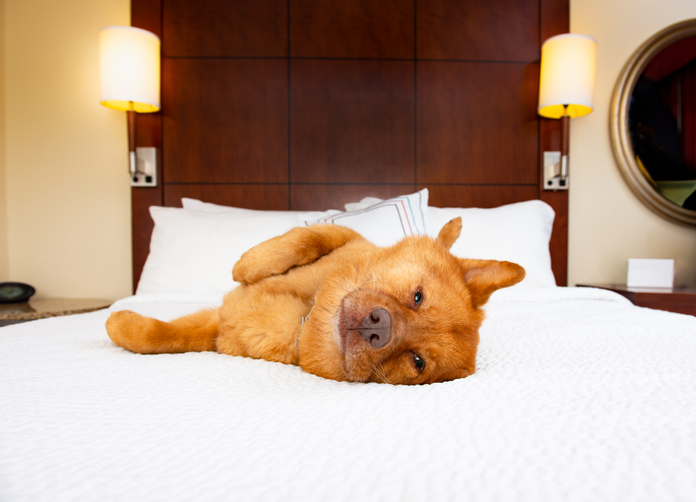
By Larry and Adam Mogelonsky
It should come as no surprise to anyone that the pandemic has changed traveler behavior. By understanding some of the nuances of this progression, you can then more precisely target growing niches within the leisure segment, particularly in light of the slow return of groups and corporate guests.
For now, 2020’s pivot for operations, marketing and sales was largely focused on:
- Cleanliness, sanitization and disinfection updates
- Delivery of contactless service, enabled by technology or otherwise
- Social distancing through physical, temporal and capacity buffers
- Privacy, anonymity, seclusion or reserving an ‘entire’ space
While we must continue to upgrade our SOPs to better approach these four trends, one other that you can also consider is the sharp uptick in household pet adoptions, spurred by the lack of public life and shear boredom. Particularly with couples or families getting a puppy or fostering a dog, one cursory Google search will tell you the numbers here are soaring.
While the official Chinese zodiac for 2021 is the Year of the Ox, perhaps it should be the Year of the Dog as this newfound rise will inevitably translate into more guests wanting pet friendly hotels.
While opening your doors to our furry friends comes with its own set of operational challenges, it will nonetheless give your property a leg up (urination pun intended!) on competitors who are also targeting drive-to markets. Plus, there are upsell opportunities to maximize revenue per room if you go this route.

- Dedicated floors or guest room sections so those with allergies can avoid these areas, requiring a deft hand at allocating inventory in the PMS and with the possibility for a higher ADR room category
- Special cleaning to remove allergens which will require more housekeeping coordination but is something you can bill as an extra expense
- Updated policies for the types of permissible pets, noise, nuisances for other guests, damages, public area pet access and pet-oriented amenities like hydration stations or even agility courses
- Contactless pet service delivery of treats, toys, beds, bowls, bags or other miscellaneous items, all at an additional cost or bundled into a room package
- Established relationships with local groomers and veterinarians
- Doggy daycare services, having onsite groomers or even trainers for younger pups
In 2019, while working on an asset management assignment for a 40-room rural resort, we noticed a strong demand for pet friendly hotels in our territory based on market intelligence and search data as well as a channel analysis for email, voice and social inquiries. From there, it took us roughly three months from an initial discussion on feasibility to having a devoted room category, a firm pet policy and all extra charges for cleaning or treats.
So, do your own channel examination to see if the demand for pet friendly hotels is trending in your area. You may also want to check the local news as many media outlets have written pieces on the pandemic surge in pet ownership. From there, form a team of managers to investigate all requirements then build a plan.
Thinking very broadly, ask yourself what other pandemic-related trends you can capitalize upon. You’ll likely find that there are other opportunities besides appealing to man’s best friend. Lastly, in case anyone is asking, the image adjoining this article is that of Hondo, my 150-pound bouvier, who by himself should help to draw your attention to this important revenue-generating initiative.
This article may not be reproduced without the expressed permission of the author.
Editor’s note: To discuss business challenges or speaking engagements please contact Larry or Adam directly.


